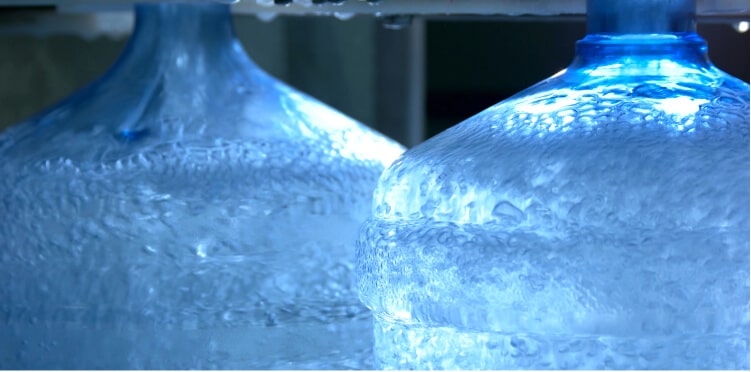Hyundai Motorstudio Senayan Park
Hyundai Motorstudio Senayan Park
Newsroom
-
Understanding The Standard of Drinking Water Quality
- Hyundai Motorstudio Senayan Park 2022.08.22
-
Quality water is among factors that support human health. But the quality of drinking water usually differs from place to place which is triggered by various factors such as geographical conditions and the process of purifying water to make it more ready to drink.
Geographical conditions greatly affect water sources so the mineral composition in water is different. Drinking water quality standards will ensure that drinking water, taken from any source, will not harm humans when consumed.
What is the Standard for Quality Drinking Water?
Drinking water is basically water that meets quality standards to be used or consumed without giving direct or indirect harmful effects.
To produce quality drinking water, water is usually processed through several stages before it can be used. The processing sequence will depend on the water source. The lower the water quality, the longer the process.
Regardless of the source, water contains chemical contaminants, biological pollutants, and microscopic particles. In other words, water quality can be seen from its chemical, physical, and biological characteristics.
Furthermore, microscopic concentrations of algae, pesticides, herbicides, iron and other contaminants will be calculated to determine the water quality. A scientific approach must be taken to determine the water quality according to its purpose.
Poor quality drinking water is not only harmful to humans, but the ecosystems as well. Seaweed and coral thrive better in clean water with low in nutrients. Too many nutrients can trigger an algae bloom that hinders the growth of seaweed and coral.
Drinking Water Quality Indicator
The quality of drinking water is calculated from several factors such as the level of dissolved oxygen concentration, salinity, turbidity, or bacteria. Each water source has a different content, so processing plays a key role in making water drinkable.
1. Dissolved Oxygen
Oxygen in water is important for humans, animals and plants. But there are times when the oxygen content in the water becomes abnormal, causing problems for living things. That's why calculating oxygen levels is very important and is the main indicator to see water quality.
The most influential factors on oxygen levels include the number of bacteria and temperature. It affects not only oxygen, but biological and chemical processes, composition, stratification, and density of water.
Furthermore, temperature has an impact on ammonia levels, photosynthesis, and the metabolism of organisms. The water temperature often fluctuates due to solar heat, rainfall, water sources, condensation and evaporation.
2. Conventional Variables
This is a parameter used to calculate the water environment, including drainage, ecosystem, changes in water quality each season.
Potential of hydrogen (pH) is a calculation of ion concentration on a scale of 0-14, with 7 being a normal number. The pH level of the majority of water is between 6 and 8.5, while water with a pH below 4.5 or above 9.5 is lethal to small organisms in the water.
The pH level can affect the reproduction and biological processes. Iron, salts, and other organic components are also affected by pH.
3. Nutrition
Nutrients in water are needed by living things for metabolism. Nitrogen and phosphorus are important components in aquatic ecosystems along with other elements such as iron, magnesium, and copper.
In aquatic environments, nutrients can be found in the form of organic and inorganic particles. Phosphorus is produced by minerals when weathering or decomposition of organic material occurs, while fertilizers or animal manure are artificial sources of nutrients.
The appearance of algae in massive numbers prevents the process of photosynthesis and triggers the emergence of toxic substances. When the algae eventually die and decompose, oxygen concentrations will drop, reducing the quality of water for human use.
4. Metal
The quality of drinking water is strongly influenced by metal components in water such as copper, manganese, and zinc. If these elements have too high a concentration, the results are actually dangerous for humans and animals.
Mercury is the most dangerous element in drinking water. Not only does it reduce the quality of drinking water, it harms the body.
The Minatama Beach disaster in Japan in 1968 is the worst example. Large industrial waste that is disposed of brings negative impacts such as mercury accumulation on the skin, seizures, paralysis, and pregnancy problems.
5. Bioindicators
Bioindicators are small organisms that are used to monitor the health of aquatic ecosystems, the amount of microalgae for example.
Aquatic organisms such as plants, plankton, microbes, and animals provide important information for the water quality. It includes organic elements to assess environmental pollution of water.
Other factors are the amount of light that penetrates the water, temperature, and the density of the water. Changes in the composition of bioindicators will explain whether the water is fit for human use, for drinking water or for other purposes.
6. Hydrocarbons
Hydrocarbons are organic chemical compounds that contain only carbon and hydrogen. But for some conditions, hydrocarbons will have more complex composition if they are contaminated with fossil fuels, chemicals, or decaying organic matter.
To improve the quality of drinking water, hydrocarbons must be processed to make them more drinkable. High hydrocarbon composition triggers a high risk, both for aquatic animals or humans due to bioaccumulation.




